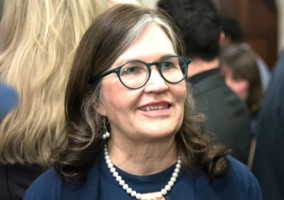Julian Anthony looks at his recent learnings on unitary board structures and explains why he thinks they should be more readily enabled by the Charity Commission.
Until I raised an innocent question at the recent Charity Finance Summit, prompted by logistical frustrations in getting routine documents signed by trustees based geographically apart from our offices, I was not even aware of the term “unitary board”, much less that there is a swell of opinion being expressed on the merits of one structure over the other.
For anybody reading this article that is as ignorant as I was, a unitary board structure means there is a single board of directors, comprising executive and non-executive directors. Executive directors are those with responsibility for day to day running of the organisation (i.e. senior management team) and will usually be employees of the organisation. Non-executive directors do not have day to day management responsibility but are chosen to be on the board as their specific skills and expertise will be helpful for providing constructive challenge to aid strategic decision making.
Under the alternative two-tier structure (common to the charity sector) the executives manage the day to day running of the organisation led by the chief executive and then there exists a second tier supervisory board of non-executive directors who are responsible for the strategic oversight of the organisation and are led by the chair (in the case of a charity the supervisory board is referred to as the board of trustees).
Both the private and public sectors (the NHS is a prime example) provide plenty of evidence to support the idea that unitary boards often deliver the best corporate governance given the combination of independent oversight coupled with detailed knowledge of the organisation. Yet the charity sector has not fully embraced this structure (though there are exceptions) and the Charity Commission tends to discourage the concept.
Unitary boards could mean more balanced decisions
Across the third sector we are faced with increasingly challenging commercial and moral decisions to make. The unitary board approach may offer a more balanced approach to decisions by combining detailed knowledge of the organisation (from executive members) with informed challenges and questions being asked by the independent non-executive members.
Ultimately it is the quality of the people making up the board (be they executive or non-executive members) and their abilities to work together for the goals of the organisation that will determine the robustness and effectiveness of leadership, rather than the formation of a unitary or alternative two tier board. An analogy may be drawn from the football world where there may be much debate about 4-4-2 v 4-5-1 formations, though ultimately the team with the better players, organisational understanding and work ethic will usually triumph regardless of shape chosen. However, there is strong evidence that in many cases, particularly large organisations, a “unitary” board may deliver more effective and collaborative leadership.
Currently the Charity Commission are wary of and discourage the appointment of executives to the trustee boards of charities, largely due to concerns about conflicts of interest that they perceive may arise from employees holding a position on the board. However there is a strong argument that the opposite is true as an executive on the board would be far more accountable for recommendations and decisions made than if they were simply able to point at the non-executive board as solely accountable for an implemented business initiative that proved to be unsuccessful. An executive member of the trustee board would be unable to abdicate decision making to the more traditional trustee board made solely of non-executive members.
Whether just a couple of executive team members such as the chief executive officer and chief financial officer or the entire management team should be included in the make up of a unitary board is a decision for each individual charity to consider for themselves and may depend on the mix of skills available.
Charity Commission's board
The Charity Commission outline the responsibilities of their own non-executive board as follows:
Our board is ultimately responsible for all that we do. This includes:
- our overall performance
- our values, integrity and reputation
- how we meet our statutory objectives and use our legal powers
- our business direction and strategy
- our management team’s performance, governance standards and delivery against plans
Our board pays particular attention to:
- maximising our impact and effectiveness
- identifying and managing risks
- listening and responding to stakeholders
- maintaining our independence from government and the sector we regulate
- making sure we use public funds prudently
- making sure we act fairly, responsibly, transparently, proportionately and ethically
As chief financial and operating officer at Norwood (a learning disability charity) I recognise all the above responsibilities as being the very reasons that the executive board (or senior management team) come to work each day. Is there anything in the list above that any chief executive officer, chief financial officer, director of HR, director of corporate services or any other member of an executive management team would not feel was within their remit to deliver (albeit welcoming guidance and challenge from the non executive trustees)? On the assumption that the answer is “no” I would argue that there is a strong argument for representation from that executive team on the full trustee board of the charity.
Considering the organisation as a whole
A further benefit of including executive directors on the board is that it drives those members to consider all aspects of the organisation rather than just their own primary disciplines. A director of finance for example must be as keen to consider the impacts of workforce related matters and a director of operations must similarly be concerned with the financial performance as they share in the full responsibility for the full breadth of the charity’s governance. There is greater risk of taking a more blinkered view focused on their own areas of primary responsibility where they are not accountable as trustees.
I am not suggesting that all charities should adopt unitary board structures for their governance. However I do feel the option to do so should be more readily enabled by the Charity Commission’s approach and I do think many charities should at least consider the pros and cons of it. Where the charity feels there would be benefit in such a structure it should be a far easier process to implement than is currently the case.
One caveat to unitary boards
Provided there is clear justification that it is in the best interests of the charity and that any conflicts of interest can be adequately managed I believe there is sound logic in considering representatives from the executive (senior management) team as members of the trustee board. With carefully selected individuals possessing the appropriate mix of skills a unitary board may well lead to a better shared responsibility, more efficient and effective assessment of issues and a clearer strategic outlook. The one caveat I would make, in order to preserve independent decision making, is that the executive members should never out-number the non-executives on that trustee board.
Coming back to my initial reason for asking the question that has prompted this “paper”, a unitary board structure will also resolve some logistical inefficiencies of a two tier structure in terms of obtaining physical signatures on certain documents which by law must be signed by a Trustee (“legal director”). Naturally robust governance and authorised signatory levels must be implemented and observed regardless of trustee board structure.
Julian Anthony is chief financial and operating officer at Norwood
Related articles












